Agriculture or music?

I was born and have always lived in big cities. I was born in Caracas and lived in Berlin, in Moscow and a short time in Mexico City. Which makes me an urban being in my totality and that's how I've always felt. I am also a musician and artist in several fields, but always far away from the tasks that link us ancestrally with the earth, that is to say, its cultivation. I think I never went farther from making a seed germinator to school.
Versión en español disponible. ¡Click aquí!
Spanish version available. Click here!
The change
Twenty years ago I moved to an area that, although it is in the city of Caracas, is a wooded area, with part of National Parks and close to a rural area. In the back of my house there is a garden and a part of the park, in which it's not allowed to build, it must remain natural. But sowing is allowed in it.
But that is a task that for an urban being like me, is not as easy. Of course, by having a space like that, one immediately imagines himself as the perfect farmer, harvesting the most varied and exotic fruits, from one day to the next. Because after all the thing is simple: open a hole, put the seed, cover, pour water and wait for the fruits... Big mistake! That's when you find out that for some reason it is called agri-culture, because it's a culture of which urban beings like me do not have the slightest idea. And then you understand the saying that says "A cobbler should stick to his last", the same should be for the farmer
The surrender
There were many attempts to sow: papaya, orange, tangerine, lemon, mamon, banana in different variants, tomato, onion, and many more, but no, none grew. The one was closest to was the pumpkin, but a gardener with less judgment than me came and passed the lawn mower without the slightest compassion.
After years of attempts, I gave up. Yes, I am not very given to the surrender, but I understood that as a musician it would not be so easy to understand everything about the alkalinity of the ground, its compositions and hardness and for what fruits each of the variants is destined; as well as remembering the cycle of the moon to understand when to sow, in which to defoliate and in which to harvest. In addition to learning all the fertilizers that should or should not be used. Understand which plants should be placed together and which separate, in short, it was time to get off my "conuco" (small farm) and resume the scores, arrangements and compositions and forget my rural side.

But there is no doubt that it is an exciting world and that there is nothing more satisfying than taking the fruit directly from the tree. It is a unique and beautiful sensation and it surprises us to see how the earth gives us food.
But I have learned in life to take what life gives me. And, although I did not work anymore as a food grower, my conuco decided to reward my effort and now, without dedicating time to agriculture, several of the trees regularly give me their fruits. Mango, pitanga, medlar and Japanese medlar are the foods that we regularly get from our own courtyard.
But also the plants of cambur, which is what is called in Venezuela one of the variants of banana (Cavendish banana), have decided to reward my effort for a long time.
More than two months ago, for the second time, a flower appeared on one of these plants, which is the preamble of the fruits. Among all that I had previously studied about the cultivation of this bush, I knew when I had to defoliate and the care I should have. I was also aware that these plants tend to go sideways because of the weight of the fruit and that we have to place support stakes and such kind of resources.
So, without paying much attention, I let the plant do its process, taking care of it just a little.
Finally, the fruit had already developed a lot and the weight caused the plant to bend even more, despite the supports I placed on it, so I made the decision to proceed with the harvest.

The next section does not require so many words, since the images speak for themselves.
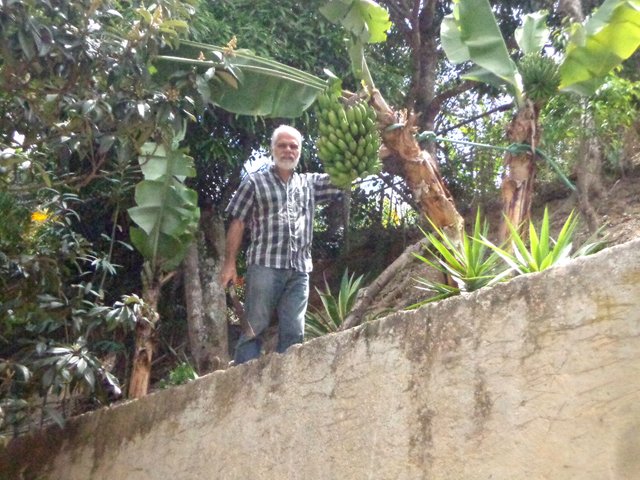 | 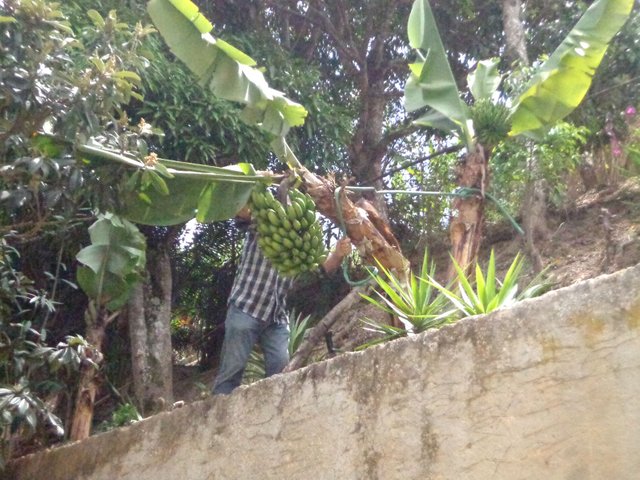 | 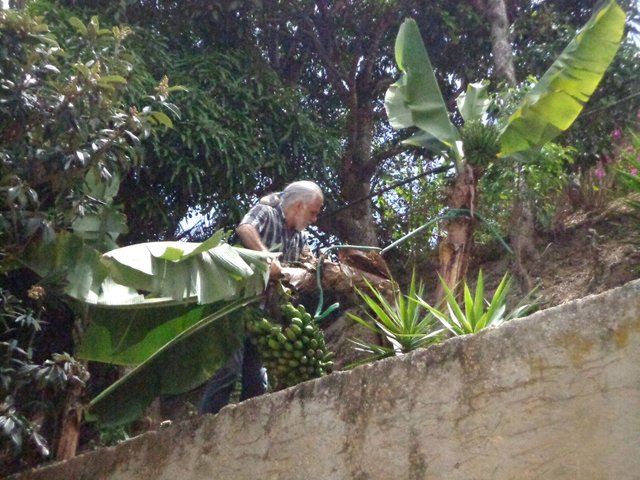 |
|---|---|---|
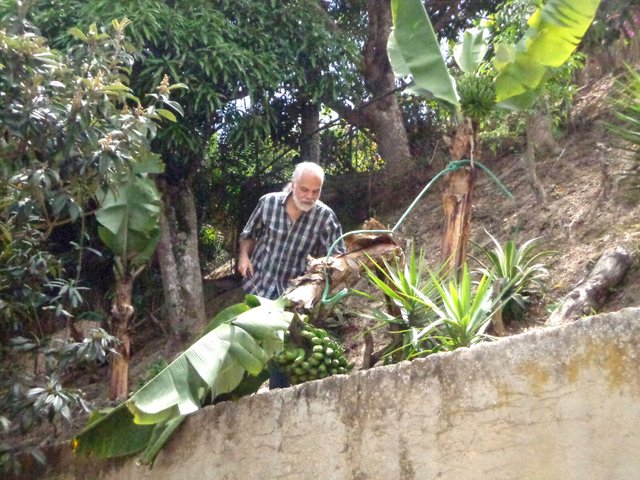 | 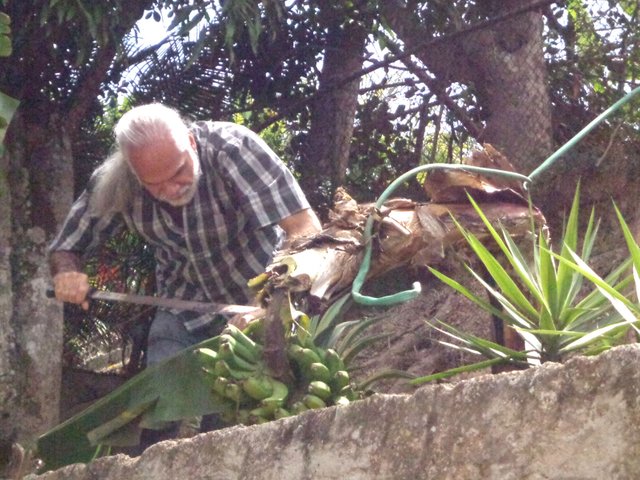 | 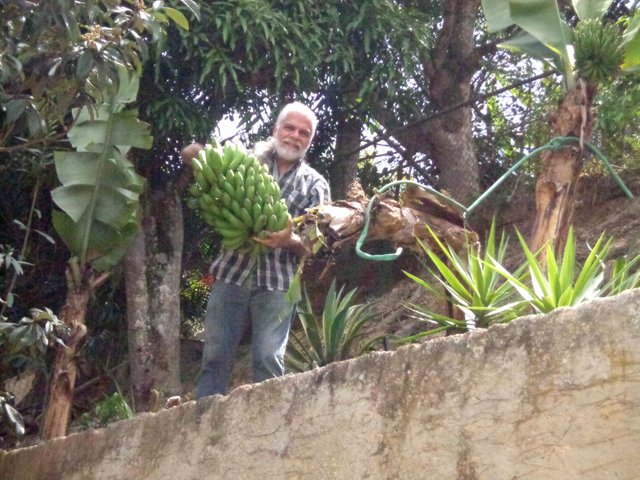 |
The point is that you must first cut the plant by the place where it has been folded, in this way we help the fruit to fall without being hit. Then we proceed to cut the cluster.
Once put in a safe place, where we let the sap that continues to sprout after cutting dry and where we can make a first water wash, we can go to the second step with the plant. It consists in cutting the "mother" (the main Stem). Around this mother plant are formed little plants (children) which will be responsible for the following fruits. And so each time one ends its function, it is cut to support a new shoot to grow up and to generate the new fruits.
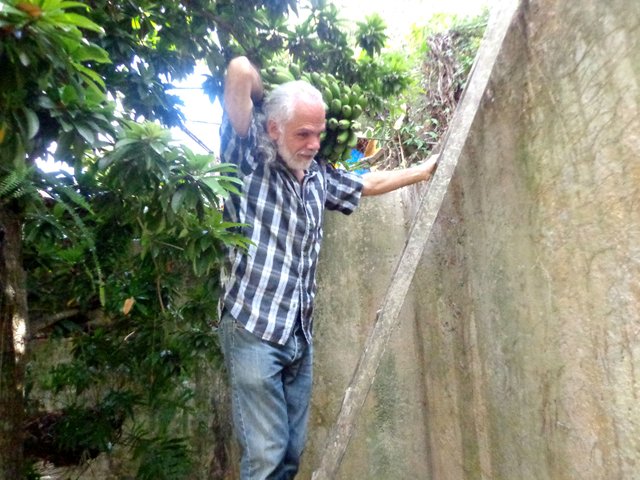 | 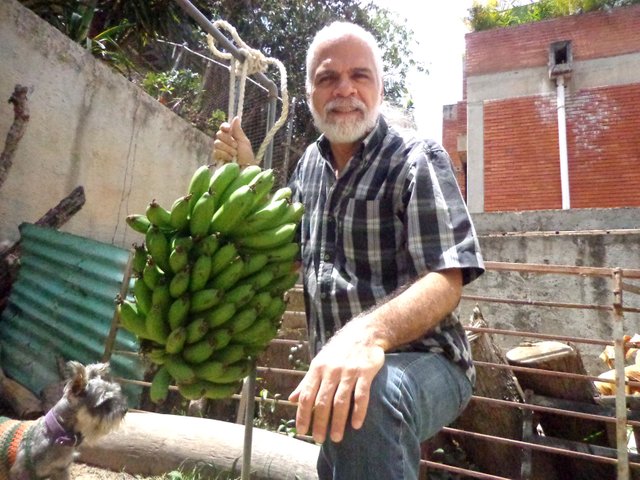 |
|---|
After cutting the mother from the base, there is a way to get a "seed" from there, which is to take the root of that mother and cut the parts that cover it until leaving it with the appearance of seed, clean. This will be planted in a new location.
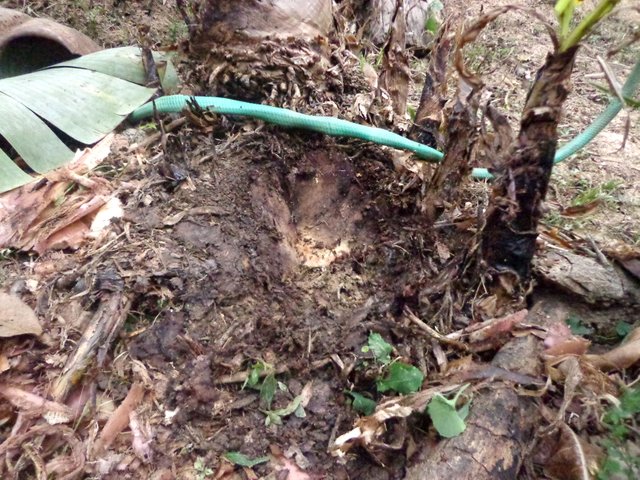 | 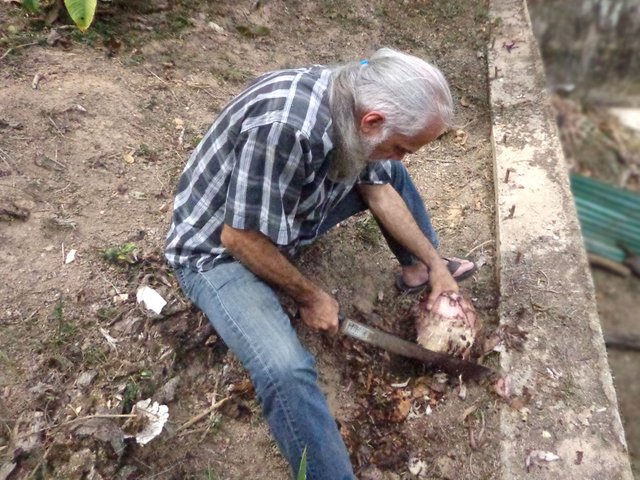 |
|---|

Regarding fruits, the next step is to cut it in hands, which are the small groups of fruits (about 6 bananas or more), so that they finish their ripening process.
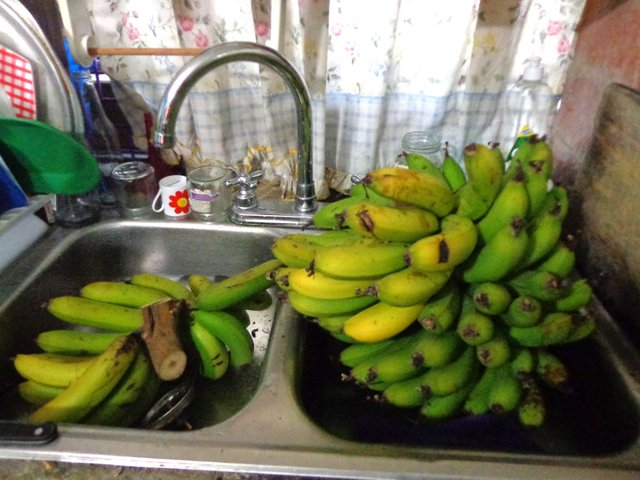 |
|---|
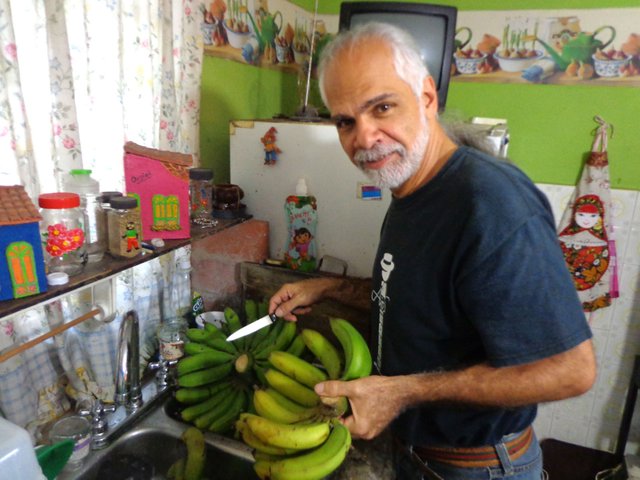 |
Once they acquire their yellow color, the fruit is ready to be eaten.
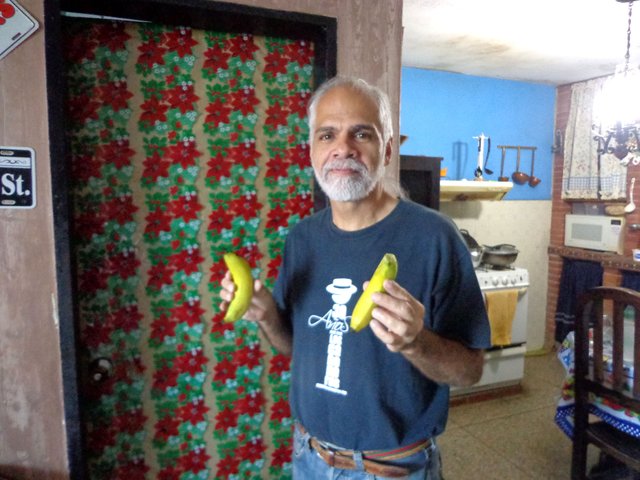 | 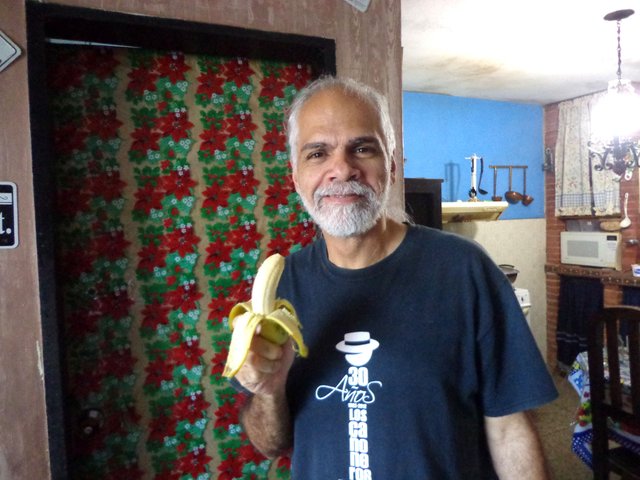 | 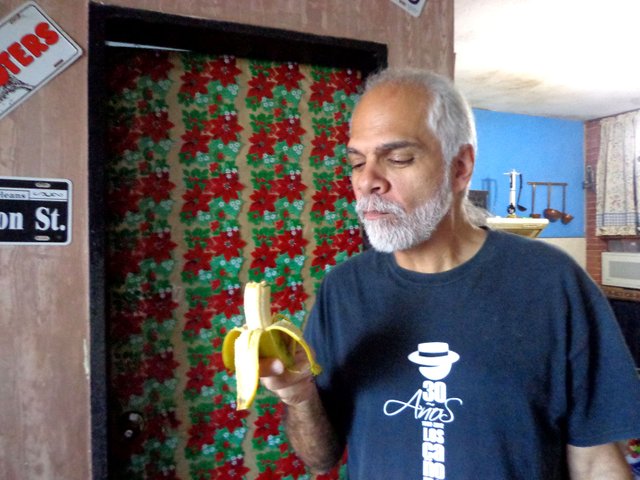 |
|---|

Musical closing
Before this kind of experience, the field for me was a poetic and musical reference as it is in the song of Juan Luis Guerra, "Ojalá que llueva café en el campo" (I hope it rains coffee in the field), which I leave here as a musical contribution that could not be missing in a post of a musician and not a farmer... :-D
Comments are welcome!
• All pictures are mine, taken with a camera Sony Cyber-shot 16.1

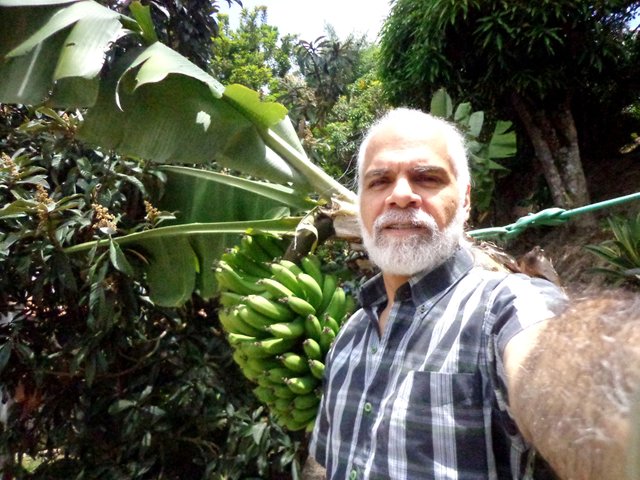
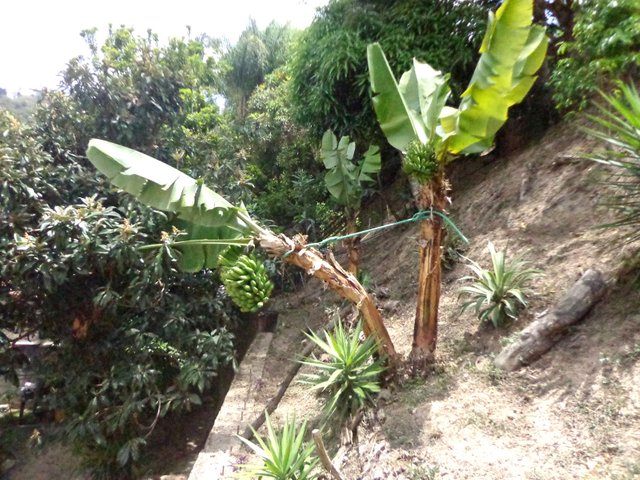
aqui en venezuela también se cosecha bastante
Congratulations @ylich! You have completed some achievement on Steemit and have been rewarded with new badge(s) :
Click on the badge to view your Board of Honor.
If you no longer want to receive notifications, reply to this comment with the word
STOPTo support your work, I also upvoted your post!
Do not miss the last announcement from @steemitboard!
Resteemed your article. This article was resteemed because you are part of the New Steemians project. You can learn more about it here: https://steemit.com/introduceyourself/@gaman/new-steemians-project-launch
Congratulations! This post has been upvoted from the communal account, @minnowsupport, by stimu from the Minnow Support Project. It's a witness project run by aggroed, ausbitbank, teamsteem, theprophet0, someguy123, neoxian, followbtcnews, and netuoso. The goal is to help Steemit grow by supporting Minnows. Please find us at the Peace, Abundance, and Liberty Network (PALnet) Discord Channel. It's a completely public and open space to all members of the Steemit community who voluntarily choose to be there.
If you would like to delegate to the Minnow Support Project you can do so by clicking on the following links: 50SP, 100SP, 250SP, 500SP, 1000SP, 5000SP.
Be sure to leave at least 50SP undelegated on your account.
Muy buen post! , cada vez más es recomendable plantar nuestra propia comida, al menos sabemos de donde sale. Saludos!!
¡Así es Ivanna! Pero de verdad que es una experiencia extraordinaria comer directamente de la planta (bueno, casi).
Gracias por leer y comentar.